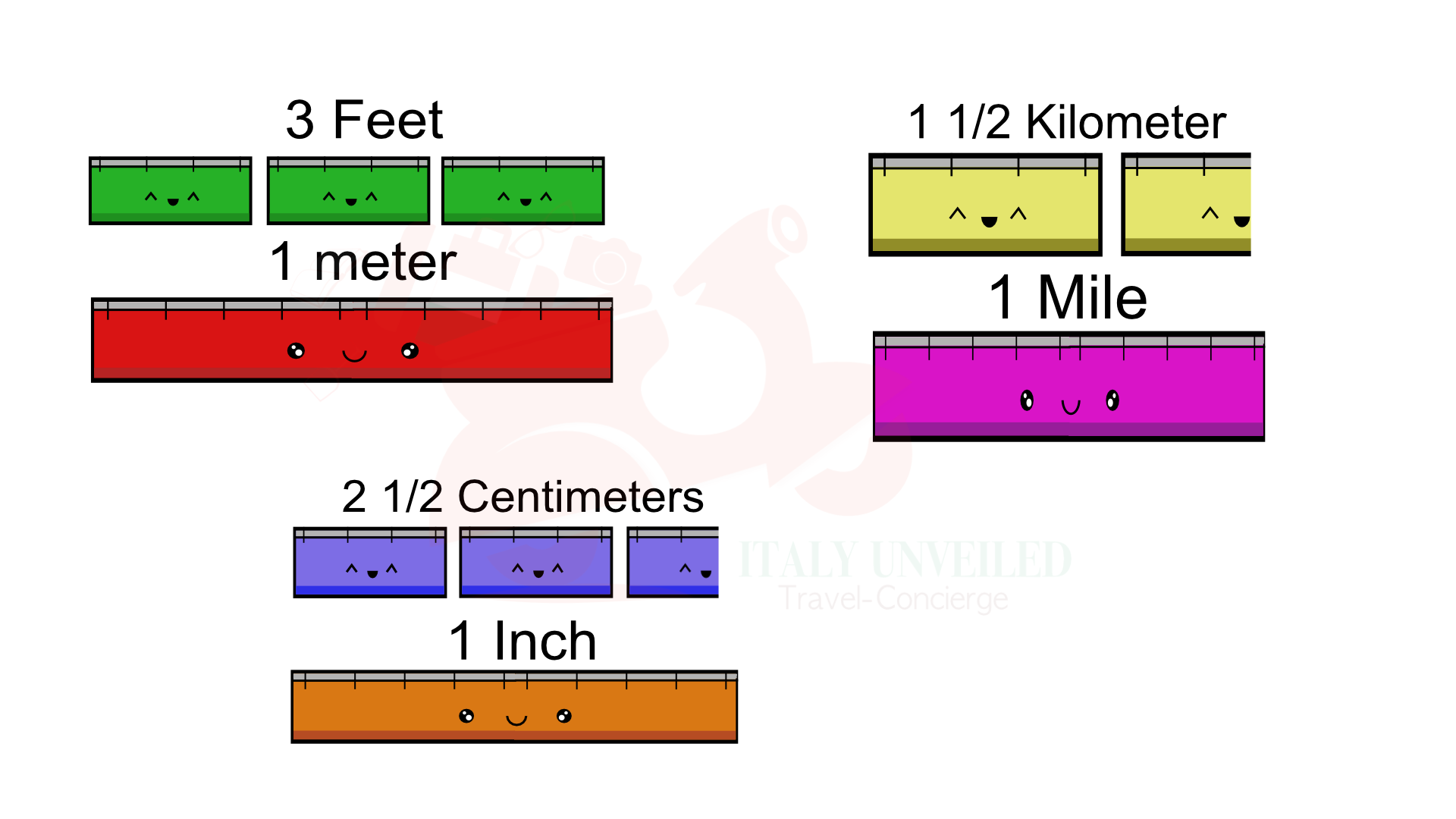Metrics Or Imperial?
When it comes to traveling and exploring new places, understanding the local units of measurement can make a world of difference. In this Metric Vs. Imperial Survival Guide, I will give you all the tools necessary to understand and make a quick conversion in your mind.
I’ve always disliked using a calculator in my everyday life; there is no time to make that math! What I need is not the perfect number but a general idea.
Feet Vs. Meters
In this article, I aim to equip you with the tools to understand conversions immediately without hesitation and a calculator.
For example, if I tell you that the table is 1 meter wide, I immediately know that it’s roughly equal to 3 feet. So, in my head, if you are 6 feet tall, you are almost 2 meters. Of course, this isn’t a perfect conversion, but it will be incredibly helpful when someone mentions that the distance between two places is 100 meters. Just multiply that by 3, and you’ll easily have a rough idea of the number.
The alternative is having a great mind for math! Because 1 meter is equal to 3.281 feet. So..
100 meters x 3.281 feet/meter ≈ 328 feet
Centimeters Vs. Inches
Now that you’ve learned how to easily convert meters to feet, let’s explore how to handle centimeters and inches. My handy shortcut involves multiplying or dividing by 2.5, as it simplifies the process, but because it’s not that easy all the time I have a little trick.

From Inch to Centimeters:
Multiply by 2 and then add half of the original number.
This may sound complicated, but it’s a quick way to convert.
For example, if you have something that’s 50 inches wide:
- Multiply 50 by 2, which equals 100.
- Add half of the original number, which is 25 (50 divided by 2).
- The result is 125 centimeters.
So, 50 inches is approximately 125 centimeters.
Formula: 50 inches x 2.54 centimeters/inch = 127 centimeters
From Centimeters to Inches:
Divide by 2 and subtract the first two digits of the original number.
Example, a table that’s 150 centimeters wide:
- Divide 150 by 2, which equals 75.
- Subtract the first two digits of the original number (15).
- The result is 60 inches.
So, 150 centimeters is approximately 60 inches.
Formula: 150 centimeters ÷ 2.54 inches/centimeter ≈ 59.06 inches
Second Example – 450 Centimeters to Inches:
- Divide 450 by 2, which equals 225.
- Subtract the first two digits of the original number (45).
- The result is 180 inches.
So, 450 centimeters is approximately 180 inches.
Formula: 450 centimeters ÷ 2.54 inches/centimeter ≈ 177.17 inches
Miles Vs. Kilometers
From Miles to Kilometers:
To convert miles to kilometers, you can use the “add half” rule.
Simply take the number of miles and add half of that value to get the approximate equivalent in kilometers.
Example:
- 10 miles divided by 2 = 5
- 10 miles + 5 =15
- 10 miles equal approximately 15 Km.
Real formula:
10 miles x 1.60934 kilometers/mile ≈ 16.0934 Km
From Kilometers to Miles:
Divide the Km by 2 and then add the first two digits of the original number
Example:
- 100 kilometers divided by 2= 50
- Original number in km 100 – the first 2 digits =10
- 50 + add 10 = 60 ml
Real formula:
100 kilometers x 0.621371 miles/kilometer ≈ 62.1371 miles
Conclusion
I understand that at first glance, my system may seem a bit complicated, but once you get the hang of it through a couple of uses, you’ll realize how swift and efficient it can be.
My goal is for this guide to boost your confidence when dealing with both the metric and imperial systems of measurement.









